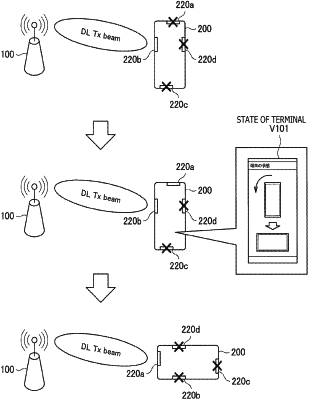| CPC H04W 16/28 (2013.01) [H04B 7/08 (2013.01); H04W 24/04 (2013.01)] | 14 Claims |

|
1. A first communicating device, comprising:
plural antenna devices configured to receive radio signals from different directions, wherein
each antenna device of the plural antenna devices is configured to communicate with a second communicating device via a wireless communication path, and
the second communicating device corresponds to a base station;
a casing configured to support the plural antenna devices; and
circuitry configured to:
control operation of each antenna device of the plural antenna devices;
prioritize a target antenna device among the plural antenna devices to receive, from the second communicating device, a radio signal of the radio signals,
wherein the radio signal corresponds to a downlink signal;
control the target antenna device to receive a reference signal from the second communicating device;
execute, based on the reception of the radio signal and the reference signal by the target antenna device, a process related to diagnosis of the target antenna device,
wherein the process related to the diagnosis includes measurement of reception strength of the downlink signal;
determine, based on sub-carrier intervals within which the reference signal is transmitted from the second communicating device, a measurement period for the measurement of the reception strength;
determine that the target antenna device is operating normally in a case where the reception strength is equal to or higher than a threshold value; and
determine that an abnormality has occurred in the target antenna device in a case where the reception strength is lower than the threshold value.
|